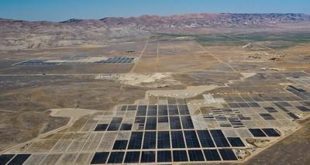The global market for module-level power electronics (MLPEs), which includes photovoltaic (PV) microinverters and power optimizers, is forecast to grow at a compound annual growth rate (CAGR) of 19 percent per year to reach more than $1 billion in 2019. According IHS (IHS), the leading global source of critical information and insight, Enphase led the microinverter market in 2014, due to the company’s large residential market share in the United States and continued expansion into new markets in Europe and Asia-Pacific (APAC). SolarEdge dominated the power optimizer market last year, due to the company’s success adding partners in the United States, as well as its entry into new emerging markets globally.
Microinverters, which convert direct current (DC) electricity from a single solar module into alternating current (AC) used by all electrical devices, are more costly than conventional string or central inverter devices that convert power from multiple solar panels; however, they can harvest up to 25 percent more electricity. Power optimizers take a similar approach to microinverters by performing the maximum power point tracking (MPPT) at a module level, but a conventional inverter is still used for the DC-AC stage.
The average price for traditional PV inverters fell 16 percent in 2014, but revenues for MLPE suppliers continued to grow, despite declining prices caused by intense competition in the inverter market. The global market for MLPE is estimated to have grown 30 percent, year over year, to reach $430 million in 2014.
“The United States continues to be the biggest market for MLPE this year,” said Cormac Gilligan, senior analyst, solar supply chain, IHS Technology. “Due to booming residential and commercial markets, and heightened market awareness of the benefits of microinverters and power optimizers, suppliers increased MLPE shipments.”
According to the IHS PV Inverter Intelligence Service, MLPE suppliers are gaining market share in the United Kingdom, Netherlands, France, Australia and other key markets outside the United States. Over the next five years, global residential and small-commercial installations are expected to reach 75 gigawatts (GWac), with the United States accounting for 20 percent of total installations. “The growth opportunity for MLPE outside the United States is huge,” Gilligan said. “Provided microinverter and power optimizer suppliers can keep expanding into new geographical markets, and keep innovating to take advantage of energy storage and other new growth markets, there is plenty of room for both technologies in the market.”
LG, Jinko Solar, Sunpower and other major module suppliers have either partnered with MLPE suppliers or now produce their own microinverters. “Module suppliers recognize that adding a microinverter to create an AC module, or adding power optimizers to create a smart module in the factory, allows them to differentiate themselves from the competition and give their customers more options,” Gilligan said. “Sunpower’s 2014 acquisition of SolarBridge, a leading microconverter supplier, indicates that module suppliers will consider acquisition, rather than just partnership. As suppliers release next-generation models, and as prices fall, we can expect more vertical integration to occur.”
The IHS PV Inverter Intelligence Service, comprising core products such as PV Inverter Market Tracker and PV Microinverter and Power Optimizers contains analysis and forecasts for all levels of the PV inverter supply chain and end-market demand.
 Alternative Energy HQ solar power for homes, wind energy, and bio fuel issues
Alternative Energy HQ solar power for homes, wind energy, and bio fuel issues







